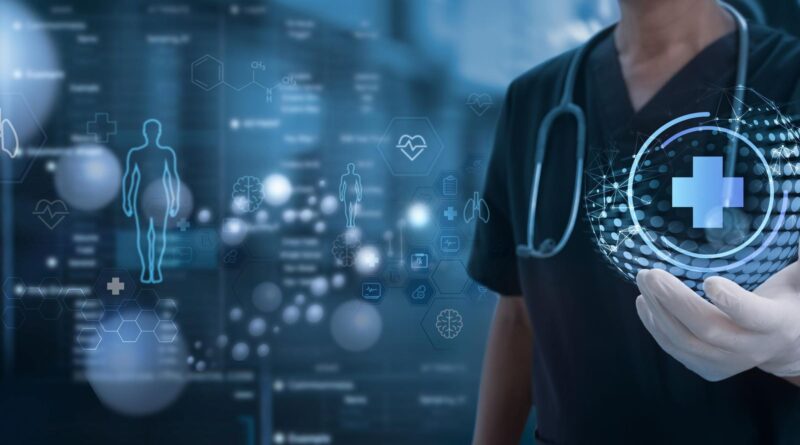Choosing a Medical Professional in the Age of Artificial Intelligence
Artificial intelligence may soon change the way doctors use medicine. … [+]
Artificial Intelligence (AI) is everywhere—like OpenAI’s Chat-GPT—and is widely used in medicine. AI may one day augment or replace some of the tasks that doctors perform.
Medical students should consider whether AI could change the work that doctors do (and get paid) when choosing specialties. This is important because of the long-term investment in specialized courses and the high barriers to change.
Similar “substitutability” concerns arose with the industrial revolution (1760-1840) that workers might not be affected by the invention of machines such as James Watt’s steam engine in 1775 and the mechanical Eli Whitney’s cotton gin in 1793. Eventually, some jobs were abolished. But other jobs were created when it was necessary for people to think and repair machines.
The evolution of AI is likely to take a similar path. However it will be very fast. As AI changes the practice of medicine, it may also change the workforce needs of physicians in more dramatic ways than industrial revolution.
Here are the specialties where AI could end up replacing a large part of doctors’ work in the future.
Diagnostic radiology
Radiology uses imaging technology: X-rays, CT scans, MRIs, and ultrasounds to diagnose disease. AI algorithms are very good at spotting patterns in images and analyzing digitally encoded data.
In a 2019 study, an independent AI without the help of a radiologist was compared with calculations from 101 radiologists on 2,652 mammograms. It found that the AI reds were as good as the radiologists. AI assistance in reading chest x-rays improved the sensitivity of detecting certain x-ray errors for pneumothorax (where air is outside the lungs) by 26%, combining (showing ts’ infection), and lung nodules (which can be the first sign. of a tumor) in 9%.
Soon, AI will be a powerful assistant for radiologists. However in the long run, there may be less need for diagnostic radiologists as AI becomes more and more autonomous.
Diagnostic pathology
Pathology involves making a diagnosis by examining tissues, cells and body fluids and using laboratory-based tools. As in radiology, AI-driven algorithms analyze enhanced pathology slides that improve cancer diagnosis, tumor grade, and biomarker scores.
A 2022 study showed that AI models significantly improved the diagnostic accuracy of pathological reports for difficult-to-find deep myxoid lesions. The AI model had 97% accuracy compared to 70% for human pathologists, and reduced their error rate by 90%. A 2024 study found that an automated AI method was accurate in interpreting cytology for thyroid needle aspiration, 95% v. 89% compared to cytopathologists.
Today AI can increase the accuracy, speed, and consistency of pathologists. However, as AI advances, some of the work of reading genetic images may become fully automated.
Dermatology
Dermatology involves the examination of acne and skin lesions, often as a referral to general practitioners and to patients seeking direct care. AI models trained on large datasets of skin images can detect cancer and diagnose chronic skin conditions.
A recent study found that the support of AI has greatly improved the sensitivity and accuracy of dermatologists in distinguishing dermoscopic images of melanoma (ie cancer) and nevi (ie moles). Sensitivity increased from 60% to 75% and accuracy from 65% to 73%. Another study found that an AI assistant improved the accuracy of non-specialists in diagnosing skin conditions with an accuracy of 54% in the AI-assisted group v. 44% for the no help group.
AI algorithms for skin analysis are being used in practice and will continue to improve. Others—like Skin Vision and Mole Mapper—scan and track skin conditions without intervention. Expanded use of this technology could extend skin diagnosis and management to non-professionals as well as directly to patients.
Internal Medicine and Pediatrics Non-Operative
Cardiologists, endocrinologists, gastroenterologists, rheumatologists and infectious disease doctors are experts in treating complex diseases in their field. Training takes several years longer than internal medicine or pediatric residency.
In the future, AI may reduce the need to consult these experts for advice and management. Instead, doctors may rely more on AI, which can help interpret lab tests, electrocardiograms, and make evidence-based recommendations. General practitioners—such as primary care physicians, pediatrics, emergency medicine, and hospital medicine—can become more comfortable managing complex situations with AI guidance, ultimately expanding their scope of practice.
Additionally, AI is likely to affect non-operational work more quickly than operational work, such as surgical care. Today’s medical AI is designed to analyze data and is unlikely to become an autonomous, surgical robot anytime soon.
How quickly these changes will occur or whether they will occur in specific objects is unknown. Health care seems to be slow to adopt new methods. Opposition from specialty groups will be strong, especially when it comes to what doctors are paid to do and referrals.
However, thinking about the possible future is important for medical students deciding on a long career at a time when AI tools are starting to change the practice of medicine.
#Choosing #Medical #Professional #Age #Artificial #Intelligence
